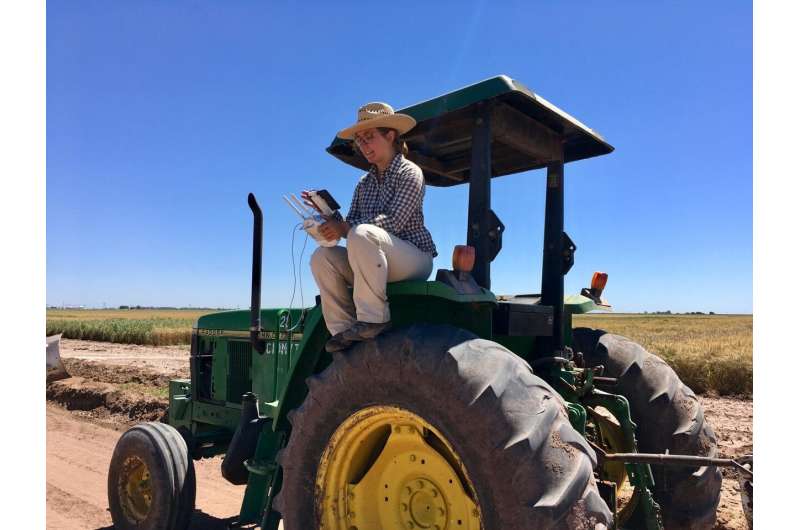Margaret Krause operates an unmanned aerial vehicle at the International Maize and Wheat Improvement Center (CIMMYT) in Ciudad Obregón, Mexico. Credit: José Manuel Reyes Mendoza
Breeding programs for crops with limited per-plant seed yield require one or more generations of seed increase to generate sufficient quantities for sowing replicated yield trials. The ability to accurately discard low potential lines at these early stages may reduce spending on costly yield testing.
Breeders typically rely on visual selection at these stages because extensive measurement of plant traits is difficult due to the large number of lines under evaluation. However, recent advances in remote sensing have made high-throughput data collection increasingly feasible.
Authors of a recent Crop Science article leveraged unmanned aerial vehicles (UAVs) to record the normalized difference vegetation index (NDVI), a measure of plant health, at the seed increase stage of the International Maize and Wheat Improvement Center's (CIMMYT) wheat breeding program. NDVI measurements were heritable and moderately correlated with grain yield, and results showed that selection based on NDVI would have outperformed visual selection.
Harnessing UAV-collected traits to inform selection at the early stages may improve resource-use efficiency in breeding programs and/or increase rates of genetic gain. As remote sensing technologies become increasingly automated and scalable, breeders will have access to comprehensive suites of traits with which to develop integrative selection strategies.
More information: Margaret R. Krause et al, Aerial high‐throughput phenotyping enabling indirect selection for grain yield at the early‐generation seed‐limited stages in breeding programs, Crop Science (2020). DOI: 10.1002/csc2.20259
Provided by American Society of Agronomy























